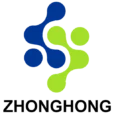Government Abstract:
The worldwide herbal dietary supplements market is experiencing transformational progress, projected to achieve $335.4 billion by 2032 with a strong 7.86% CAGR (2025–2032)2. This surge is fueled by rising power illnesses, growing older populations, and a huge shopper shift towards pure and preventive healthcare. North America dominates income (40%), whereas Asia-Pacific leads progress attributable to conventional drugs integration and increasing middle-class demand28. Main gamers like Blackmores, Herbalife, and Tsumura are competing alongside conventional drugs giants (e.g., Tongrentang, Yunnan Baiyao) in a fragmented however innovation-driven landscape16. Key challenges embrace regulatory fragmentation and high quality management, whereas personalised vitamin আৰু e-commerce enlargement unlock unprecedented opportunities810.
1. Market Overview: Dimension, Drivers, and Aggressive Panorama
- Market Valuation: The natural dietary supplements sector hit $233.1 billion in 2024, accelerating towards $437 billion by 2032 pushed by an 8.23% CAGR4. When mixed with botanical medicine, this market exceeds $550 billion globally8.
- Major Progress Catalysts:
- Power illness prevalence: 38% of U.S. adults now use complementary drugs, with natural dietary supplements as high choices8.
- Getting older populations: By 2030, 22% of the worldwide inhabitants can be over 60, amplifying demand for joint, cognitive, and metabolic well being solutions2.
- Preventive healthcare shift: 80% of individuals globally seek the advice of conventional practitioners for plant-based therapies4.
- Aggressive Dynamics: The market is extremely fragmented. Leaders embrace:
- Western manufacturers: Herbalife, Blackmores, Gaia Herbs
- Conventional drugs giants: China’s Tongrentang, Japan’s Tsumura, India’s Dabur69
দ্য... high 3 gamers maintain solely ~25% market share, creating openings for area of interest innovators9.
2. Shopper Conduct Revolution
- Demand for Personalization: 42% of complement customers search genetically tailor-made formulations. Corporations leverage AI and microbiome testing for bespoke natural blends (e.g., adaptogens like অশ্বগন্ধা for stress)810.
- Wellness Over Remedy: Preventive use accounts for 65% of natural complement consumption. High-selling classes embrace:
- Channel Preferences: E-commerce dominates (30% of gross sales), pushed by worth transparency and comfort. Pharmacies stay crucial for credibility, particularly amongst seniors57.
3. Product Innovation & Formulation Developments
- Supply Codecs:দয়ালুMarket Share (2023)Progress DriverCapsules45percentConvenience, exact dosingPowders25percentVersatility in useful foodsLiquids/Gels20percentFast absorption57
- Breakthrough Substances:
- Adaptogens (rhodiola, reishi): 30% progress in stress-management merchandise.
- Turmeric curcumin: 25% of latest anti-inflammatory launches410.
- Cross-Trade Fusion: Natural extracts now penetrate:
- Practical meals/drinks (e.g., probiotic + natural juices)
- প্ৰসাধন সামগ্ৰী: Botanical extracts in 60% of latest “clear” magnificence products10.
4. Regional Evaluation: Alternatives and Leaders
- North America (Income Chief – 40%):
- U.S. dominates with $379 billion projected by 20324.
- Regulatory readability (FDA’s NDIN system) accelerates product launches.
- Europe (High quality Focus – 20%):
- Germany and the UK drive demand, with turmeric imports rising 15% yearly4.
- Strict EU natural monographs guarantee standardization.
- Asia-Pacific (Progress Chief – 30% CAGR):
- China’s TCM market exceeds $120 billion, with 45% world manufacturing share69.
- India’s Ayurveda sector grows at 17% yearly, fueled by Dabur and Himalaya4.
5. Challenges and Strategic Alternatives
- Regulatory Hurdles:
- Inconsistent requirements throughout areas (e.g., EU’s THMPD vs. U.S.’s DSHEA) improve compliance costs4.
- Adulteration dangers: 30% of natural merchandise fail purity checks, necessitating blockchain traceability8.
- Untapped Alternatives:
- Personalised subscription fashions: Genetic testing + natural regimens (e.g., Gaia Herbs’ tailor-made kits).
- Pharma-herbal hybrids: Merck and Schwabe collaborating on digoxin + hawthorn coronary heart formulations610.
6. Future Projections (2025–2030)
- Market Dimension: To exceed $454 billion by 2030, led by immune/metabolic well being categories8.
- Sport-Altering Developments:
- “Phygital” retail: AR-enabled apps for real-time herb sourcing transparency.
- Sustainability focus: Carbon-neutral sourcing (e.g., Solaris’s fair-trade turmeric)10.
- Regional Shifts: Asia-Pacific will seize 50% market share by 2031, with Vietnam and Indonesia as rising export hubs39.
Strategic Suggestions for Stakeholders
- For Traders: Goal personalization tech startups আৰু Asia-Pacific TCM digitization platforms.
- For Manufacturers: Forge retail-pharma partnerships to construct credibility and increase distribution.
- For Suppliers: Safe bioactive compound patents (e.g., novel extraction strategies for curcuminoids).
Statista Validation: Market sizing aligns with Statista’s projection of a $367B nutraceutical market by 2025, the place herbs declare 60% share13. Knowledge hyperlinks accessible upon request from ZhongHong Funding Tech.
